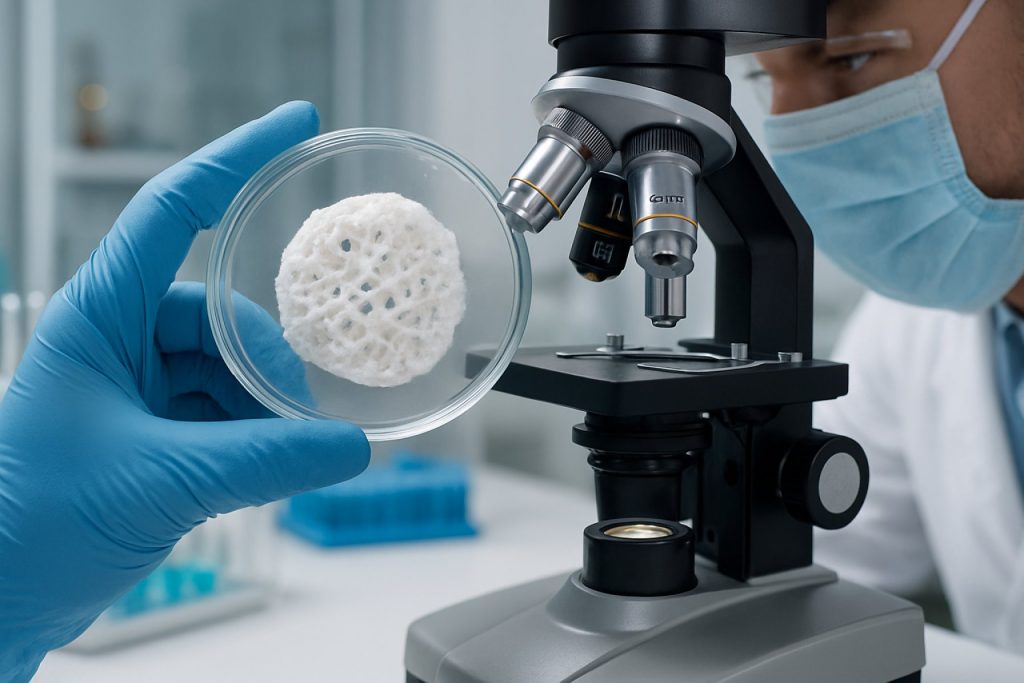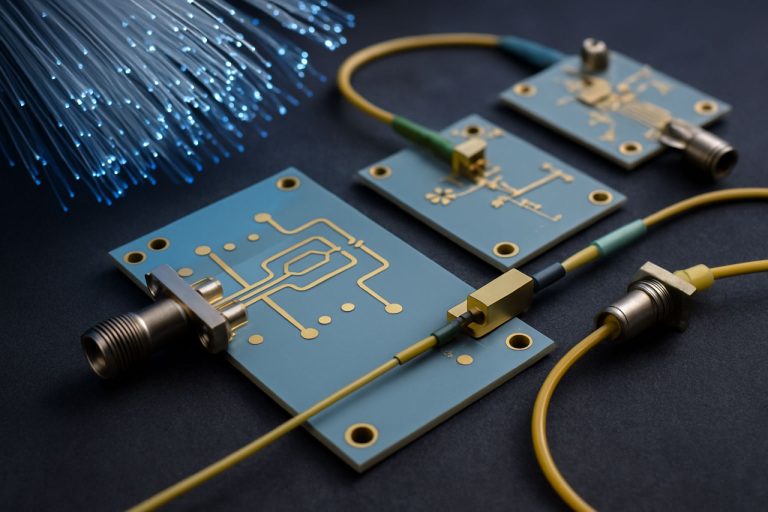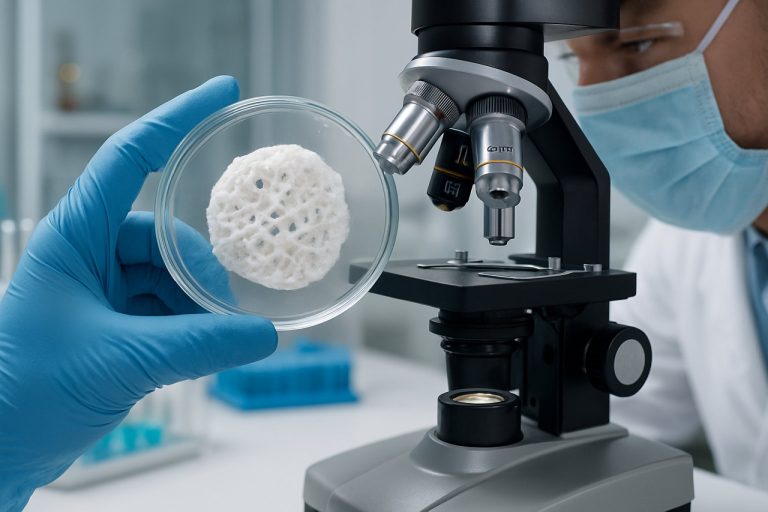
Orthobiologic Scaffold Engineering in 2025: Pioneering Regenerative Medicine and Transforming Musculoskeletal Care. Explore the Innovations, Market Dynamics, and Future Trajectory of Scaffold Technologies.
- Executive Summary: Key Trends and Market Drivers
- Market Size and Forecast (2025–2030): Growth Projections and Segmentation
- Technological Innovations in Scaffold Materials and Design
- Leading Companies and Strategic Partnerships
- Clinical Applications: Orthopedic, Spine, and Sports Medicine
- Regulatory Landscape and Approval Pathways
- Manufacturing Advances: 3D Printing and Biomimetic Approaches
- Challenges: Biocompatibility, Integration, and Long-Term Outcomes
- Investment, M&A, and Funding Trends
- Future Outlook: Emerging Opportunities and Disruptive Technologies
- Sources & References
Executive Summary: Key Trends and Market Drivers
Orthobiologic scaffold engineering is rapidly advancing as a cornerstone technology in regenerative medicine, driven by the growing demand for effective solutions in musculoskeletal repair, soft tissue regeneration, and complex wound healing. In 2025, the sector is characterized by a convergence of biomaterials innovation, increased clinical adoption, and strategic collaborations between biotechnology firms, medical device manufacturers, and research institutions. The market is propelled by the rising incidence of orthopedic injuries, an aging global population, and the limitations of traditional grafts and synthetic implants.
Key trends shaping the orthobiologic scaffold engineering landscape include the development of next-generation bioactive and biodegradable scaffolds, integration of growth factors, and the use of advanced manufacturing techniques such as 3D bioprinting. Companies like Medtronic and Smith & Nephew are at the forefront, offering a portfolio of biologic scaffolds for bone and soft tissue repair. Medtronic continues to expand its Infuse™ Bone Graft and related scaffold technologies, while Smith & Nephew has invested in collagen-based and synthetic scaffold platforms for sports medicine and wound care applications.
Emerging players such as Orthofix Medical and Bioventus are also contributing to market momentum by introducing novel allograft and demineralized bone matrix scaffolds, targeting both spinal and extremity indications. The adoption of customizable, patient-specific scaffolds is accelerating, supported by advances in digital imaging and additive manufacturing. Regulatory approvals in the US, EU, and Asia-Pacific regions are further catalyzing market growth, with agencies increasingly recognizing the clinical benefits of orthobiologic scaffolds in reducing recovery times and improving patient outcomes.
Looking ahead, the next few years are expected to witness increased integration of cellular therapies and gene editing technologies with scaffold platforms, aiming to enhance tissue regeneration and functional recovery. Strategic partnerships between scaffold manufacturers and cell therapy companies are anticipated, as seen in recent collaborations involving Medtronic and leading academic centers. Additionally, sustainability and supply chain resilience are emerging as important considerations, with companies investing in scalable, ethically sourced biomaterials.
In summary, orthobiologic scaffold engineering in 2025 is defined by robust innovation, expanding clinical indications, and a dynamic competitive landscape. The sector is poised for continued growth, underpinned by technological advancements, favorable regulatory environments, and a strong focus on improving patient quality of life.
Market Size and Forecast (2025–2030): Growth Projections and Segmentation
The orthobiologic scaffold engineering market is poised for robust growth between 2025 and 2030, driven by increasing demand for advanced regenerative therapies in orthopedics, sports medicine, and trauma care. The sector is characterized by rapid innovation in biomaterials, 3D printing, and cell-based scaffold technologies, with a growing number of clinical applications for bone, cartilage, and soft tissue repair.
By 2025, the global orthobiologic scaffold market is expected to reach several billion USD in annual revenues, with a compound annual growth rate (CAGR) projected in the high single to low double digits through 2030. This expansion is fueled by the rising incidence of musculoskeletal disorders, an aging population, and the need for minimally invasive solutions that promote natural tissue regeneration. North America and Europe currently lead in market share, but Asia-Pacific is anticipated to experience the fastest growth due to increasing healthcare investments and expanding patient access.
Market segmentation is typically based on scaffold material (natural, synthetic, composite), application (bone regeneration, cartilage repair, ligament/tendon reconstruction), and end-user (hospitals, ambulatory surgical centers, specialty clinics). Natural scaffolds—such as those derived from collagen, hyaluronic acid, and demineralized bone matrix—remain popular for their biocompatibility and ability to support cell attachment and proliferation. Synthetic scaffolds, including polylactic acid (PLA), polyglycolic acid (PGA), and polycaprolactone (PCL), are gaining traction due to their tunable mechanical properties and controlled degradation rates.
Key industry players are investing heavily in R&D to develop next-generation scaffolds with enhanced bioactivity, mechanical strength, and integration with growth factors or stem cells. Medtronic is a global leader in orthobiologics, offering a broad portfolio of bone graft substitutes and scaffold-based products. Smith+Nephew and Stryker are also prominent, with significant investments in biologic and scaffold technologies for orthopedic and sports medicine applications. Orthofix Medical focuses on regenerative solutions for bone healing, while Bioventus is expanding its orthobiologic product lines to include advanced scaffolds and cell-based therapies.
Looking ahead, the market is expected to see increased adoption of 3D-printed and patient-specific scaffolds, integration of bioactive molecules, and regulatory approvals for novel products. Collaborations between device manufacturers, biomaterial suppliers, and research institutions will likely accelerate innovation and clinical translation. As reimbursement frameworks evolve and clinical evidence mounts, orthobiologic scaffold engineering is set to become a cornerstone of regenerative orthopedics by 2030.
Technological Innovations in Scaffold Materials and Design
Orthobiologic scaffold engineering is undergoing rapid transformation, driven by advances in biomaterials, fabrication techniques, and integration of bioactive cues. As of 2025, the field is characterized by a shift from traditional inert scaffolds to dynamic, bioinstructive platforms that actively participate in tissue regeneration. This evolution is propelled by both established medical device manufacturers and innovative startups, with a focus on clinical translation and regulatory compliance.
A key trend is the development of composite scaffolds that combine natural and synthetic polymers, optimizing mechanical strength, biocompatibility, and degradation rates. Companies such as Medtronic and Smith & Nephew are advancing collagen- and hyaluronic acid-based scaffolds, often enhanced with ceramics like hydroxyapatite or tricalcium phosphate to better mimic the native extracellular matrix (ECM) and support osteointegration. These hybrid materials are increasingly tailored for specific indications, such as spinal fusion, cartilage repair, and maxillofacial reconstruction.
Additive manufacturing (3D printing) is revolutionizing scaffold design, enabling patient-specific geometries and controlled porosity at the microscale. Stryker has expanded its portfolio of 3D-printed titanium and polymeric scaffolds, leveraging proprietary technologies to create interconnected pore networks that facilitate vascularization and cell migration. Meanwhile, DePuy Synthes is investing in biofabrication platforms that integrate living cells and growth factors directly into scaffold matrices, aiming to accelerate functional tissue regeneration.
Another innovation is the incorporation of bioactive molecules—such as bone morphogenetic proteins (BMPs), peptides, and controlled-release drugs—into scaffold structures. This approach is exemplified by Orthofix Medical, which is developing scaffolds with embedded osteoinductive agents to enhance bone healing in challenging clinical scenarios. The convergence of scaffold engineering with cell therapy is also gaining momentum, with several companies exploring the co-delivery of stem cells and scaffolds for synergistic effects.
Looking ahead, the next few years are expected to see further integration of smart materials, such as stimuli-responsive polymers and nanocomposites, which can modulate their properties in response to the local tissue environment. Regulatory pathways are evolving to accommodate these complex products, with agencies like the FDA providing new guidance for combination devices. As clinical data accumulates and manufacturing processes mature, orthobiologic scaffolds are poised to become standard-of-care in a growing range of musculoskeletal and soft tissue applications.
Leading Companies and Strategic Partnerships
The orthobiologic scaffold engineering sector in 2025 is characterized by a dynamic landscape of established medical device manufacturers, innovative biotechnology firms, and strategic collaborations aimed at advancing regenerative medicine. Leading companies are leveraging proprietary biomaterials, advanced manufacturing techniques, and clinical partnerships to accelerate the development and commercialization of next-generation scaffolds for musculoskeletal, dental, and soft tissue repair.
Among the global leaders, Medtronic continues to expand its orthobiologics portfolio, focusing on bioactive scaffolds that promote bone regeneration and integration. The company’s investments in research and clinical trials underscore its commitment to evidence-based solutions, with ongoing collaborations with academic centers to validate scaffold efficacy in complex orthopedic procedures.
Smith+Nephew is another major player, with a strong emphasis on synthetic and collagen-based scaffolds for sports medicine and trauma applications. The company’s recent partnerships with biomaterials startups and research institutes are aimed at enhancing scaffold bioactivity and customization, reflecting a broader industry trend toward patient-specific solutions.
In the United States, Zimmer Biomet has reinforced its position through the integration of advanced 3D printing technologies and the development of composite scaffolds designed for both load-bearing and non-load-bearing indications. Strategic alliances with university research labs have enabled the company to accelerate preclinical testing and regulatory submissions for novel scaffold products.
Emerging biotechnology firms are also shaping the competitive landscape. Bioventus is notable for its focus on orthobiologic solutions that combine growth factors with scaffold matrices, targeting faster and more reliable tissue healing. The company’s collaborations with hospital networks are facilitating real-world data collection and post-market surveillance, supporting broader adoption of its scaffold technologies.
Strategic partnerships are increasingly central to innovation in this field. For example, several leading scaffold manufacturers have entered into joint ventures with cell therapy companies to co-develop bioactive scaffolds seeded with autologous or allogeneic cells, aiming to enhance regenerative outcomes. These alliances are expected to drive the next wave of clinical trials and regulatory approvals, particularly in Europe and North America.
Looking ahead, the orthobiologic scaffold engineering sector is poised for continued growth, with companies prioritizing scalable manufacturing, regulatory compliance, and real-world clinical validation. The convergence of biomaterials science, digital design, and regenerative medicine is likely to yield increasingly sophisticated scaffold products, supported by robust industry partnerships and a strong pipeline of innovation.
Clinical Applications: Orthopedic, Spine, and Sports Medicine
Orthobiologic scaffold engineering is rapidly transforming clinical practice in orthopedics, spine surgery, and sports medicine, with 2025 poised to see significant advancements in both product development and clinical adoption. Orthobiologic scaffolds—biomaterials designed to support tissue regeneration—are increasingly being integrated into procedures for bone, cartilage, tendon, and ligament repair, offering alternatives to traditional grafts and synthetic implants.
In orthopedics, the use of bioactive scaffolds is expanding for the treatment of critical-sized bone defects and non-union fractures. Companies such as Medtronic and Smith+Nephew are at the forefront, with Medtronic’s INFUSE™ Bone Graft and Smith+Nephew’s Regeneten™ bioinductive implant representing key commercial products. These scaffolds are engineered to provide osteoconductive matrices and, in some cases, deliver osteoinductive growth factors, accelerating bone healing and reducing the need for autografts. Clinical data from recent years indicate improved fusion rates and faster recovery times in spinal fusion and trauma cases using these technologies.
In spine surgery, the demand for biologically enhanced scaffolds is driven by the need to improve outcomes in spinal fusion and disc regeneration. Orthofix Medical has developed the Trinity Elite™ allograft, which combines viable cells with a structural scaffold, and is being increasingly adopted in complex spine procedures. The next few years are expected to see further integration of cell-seeded and growth factor-enhanced scaffolds, with ongoing clinical trials evaluating their efficacy in reducing pseudoarthrosis and enhancing patient recovery.
Sports medicine is another area witnessing rapid adoption of orthobiologic scaffolds, particularly for soft tissue repair. Arthrex has introduced the ArthroFlex® acellular dermal matrix, widely used in rotator cuff and ligament reconstruction. These scaffolds provide a biologically active environment that supports cellular infiltration and tissue remodeling, with early clinical results showing reduced re-tear rates and improved functional outcomes. The trend toward minimally invasive procedures is further fueling demand for injectable and moldable scaffold formats.
Looking ahead, the clinical landscape is expected to shift toward more personalized and off-the-shelf scaffold solutions, leveraging advances in 3D printing and tissue engineering. Regulatory approvals for next-generation scaffolds incorporating stem cells or gene therapies are anticipated in the coming years, potentially expanding indications and improving long-term outcomes. As reimbursement frameworks evolve and real-world evidence accumulates, orthobiologic scaffold engineering is set to become a mainstay in the management of musculoskeletal injuries and degenerative conditions.
Regulatory Landscape and Approval Pathways
The regulatory landscape for orthobiologic scaffold engineering is evolving rapidly as the field matures and new products approach commercialization. In 2025, regulatory agencies such as the U.S. Food and Drug Administration (FDA) and the European Medicines Agency (EMA) continue to refine their frameworks to address the unique challenges posed by these advanced biomaterials, which often combine biological, synthetic, and cellular components.
Orthobiologic scaffolds are typically regulated as medical devices, biologics, or combination products, depending on their composition and intended use. In the United States, the FDA’s Center for Devices and Radiological Health (CDRH) oversees most acellular scaffolds, while the Center for Biologics Evaluation and Research (CBER) is responsible for products containing living cells or tissues. The FDA’s 21 CFR Part 1271 provides the regulatory basis for human cells, tissues, and cellular and tissue-based products (HCT/Ps), but many next-generation scaffolds fall outside these definitions, requiring premarket approval (PMA) or de novo classification. The agency has also issued guidance on additive manufacturing and 3D-printed medical devices, which is increasingly relevant as custom scaffolds become more common.
In the European Union, the Medical Device Regulation (MDR 2017/745) governs most orthobiologic scaffolds, with additional oversight for products incorporating viable cells or tissues. The EMA’s Committee for Advanced Therapies (CAT) evaluates advanced therapy medicinal products (ATMPs), which include tissue-engineered scaffolds with cellular components. The MDR’s implementation has increased requirements for clinical evidence and post-market surveillance, impacting the development timelines for new scaffolds.
Several leading companies are actively navigating these regulatory pathways. Medtronic and Smith & Nephew have established portfolios of approved bone graft substitutes and regenerative scaffolds, often working closely with regulators to define product classifications. Stryker and Zimmer Biomet are also prominent, with ongoing clinical trials and regulatory submissions for next-generation scaffolds that incorporate bioactive molecules or cellular therapies. Startups and mid-sized innovators, such as Orthofix, are leveraging expedited pathways like the FDA’s Breakthrough Devices Program to accelerate approval for novel products addressing unmet clinical needs.
Looking ahead, regulatory agencies are expected to further harmonize standards for orthobiologic scaffolds, particularly regarding biocompatibility, manufacturing controls, and long-term safety. The increasing convergence of device, biologic, and digital health regulations will require companies to adopt multidisciplinary compliance strategies. As more products reach the market, real-world evidence and post-market data will play a growing role in shaping regulatory expectations and approval pathways through 2025 and beyond.
Manufacturing Advances: 3D Printing and Biomimetic Approaches
Orthobiologic scaffold engineering is undergoing rapid transformation, driven by advances in 3D printing and biomimetic design. In 2025, the integration of additive manufacturing technologies with biologically inspired materials is enabling the production of scaffolds that more closely replicate the structure and function of native tissues. This convergence is particularly significant for applications in bone, cartilage, and soft tissue regeneration.
3D printing, or additive manufacturing, allows for precise control over scaffold architecture, porosity, and mechanical properties. Companies such as Stratasys and 3D Systems are at the forefront, offering biocompatible materials and printers capable of fabricating complex, patient-specific implants. In 2025, these technologies are being increasingly adopted in clinical and research settings, with a focus on improving integration and healing outcomes.
Biomimetic approaches are also gaining traction, with scaffold designs that emulate the hierarchical organization of natural tissues. For example, Evonik Industries is developing advanced polymers and bioresorbable materials tailored for medical 3D printing, supporting the creation of scaffolds that degrade at controlled rates while promoting cell attachment and tissue in-growth. Similarly, CollPlant leverages recombinant human collagen produced in plants to fabricate scaffolds with enhanced biocompatibility and reduced immunogenicity.
Recent years have seen the emergence of multi-material 3D printing, enabling the incorporation of growth factors, living cells, and bioactive molecules directly into scaffolds. This is exemplified by collaborations between material suppliers and device manufacturers, such as BASF and GE Additive, who are working to optimize printable biomaterials for orthobiologic applications. These partnerships are expected to accelerate the translation of laboratory innovations into commercial products over the next few years.
Looking ahead, the outlook for orthobiologic scaffold engineering is promising. Regulatory agencies are beginning to establish clearer pathways for the approval of 3D-printed and biomimetic implants, which is anticipated to drive further investment and adoption. The next few years will likely see increased personalization of scaffolds, integration of smart sensors for real-time monitoring, and expanded use of biofabrication techniques that combine cells and materials in a single manufacturing step. As these technologies mature, they are poised to significantly improve patient outcomes in musculoskeletal repair and regeneration.
Challenges: Biocompatibility, Integration, and Long-Term Outcomes
Orthobiologic scaffold engineering is advancing rapidly, yet several critical challenges remain in the areas of biocompatibility, tissue integration, and long-term clinical outcomes. As of 2025, the field is witnessing a surge in the development and clinical evaluation of next-generation scaffolds, but translating laboratory successes into reliable, safe, and effective patient therapies continues to be a complex endeavor.
Biocompatibility remains a foundational concern. Scaffolds must avoid eliciting adverse immune responses while supporting cellular attachment, proliferation, and differentiation. Companies such as Medtronic and Smith & Nephew are actively developing and refining biomaterials—ranging from collagen-based matrices to synthetic polymers—designed to minimize inflammation and cytotoxicity. For example, Medtronic has focused on optimizing the purity and cross-linking of collagen in its products to reduce immunogenicity, while Smith & Nephew is exploring composite scaffolds that combine natural and synthetic elements for improved compatibility.
Integration with host tissue is another major hurdle. Successful scaffolds must not only support initial cell seeding but also promote vascularization and seamless incorporation into native tissue. Smith & Nephew and Medtronic are both investing in surface modification technologies and bioactive coatings to enhance cell signaling and tissue ingrowth. Additionally, companies like Zimmer Biomet are leveraging 3D printing to create patient-specific architectures that better mimic the mechanical and biological environment of target tissues, aiming to improve integration and functional outcomes.
Long-term outcomes and durability of orthobiologic scaffolds are under close scrutiny as more products enter clinical trials and post-market surveillance. The risk of scaffold degradation, loss of mechanical integrity, or late-onset immune reactions remains a concern. Industry leaders such as Zimmer Biomet and Medtronic are conducting multi-year follow-up studies to assess the longevity and safety of their scaffold products in orthopedic and soft tissue applications. These studies are critical for regulatory approval and for building clinician and patient confidence in the technology.
Looking ahead, the next few years are expected to bring incremental improvements in scaffold design, with a focus on smart biomaterials that can respond to the local tissue environment and release bioactive factors on demand. However, overcoming the intertwined challenges of biocompatibility, integration, and long-term performance will require continued collaboration between material scientists, clinicians, and industry leaders such as Medtronic, Smith & Nephew, and Zimmer Biomet.
Investment, M&A, and Funding Trends
The orthobiologic scaffold engineering sector is experiencing a dynamic phase of investment, mergers and acquisitions (M&A), and funding activity as of 2025, driven by the convergence of regenerative medicine, biomaterials innovation, and increasing clinical demand for advanced tissue repair solutions. The market is characterized by both established medical device companies and a growing cohort of specialized startups, with significant capital inflows and strategic partnerships shaping the competitive landscape.
In recent years, leading orthopedic and regenerative medicine companies have intensified their focus on scaffold technologies. Smith & Nephew, a global medical technology leader, has expanded its orthobiologics portfolio through targeted acquisitions and internal R&D, aiming to integrate bioactive scaffolds with their existing surgical solutions. Similarly, Medtronic continues to invest in biologic platforms, leveraging its scale to accelerate the clinical translation of next-generation scaffolds for bone and soft tissue regeneration.
Startups and early-stage companies remain a focal point for venture capital and strategic investors. Notably, Bioventus has actively pursued partnerships and minority investments in scaffold innovators, seeking to complement its orthobiologics and bone healing product lines. In parallel, Stryker has demonstrated a commitment to inorganic growth, acquiring companies with proprietary scaffold technologies to bolster its regenerative medicine division.
The sector has also witnessed cross-border M&A activity, with European and Asian firms seeking access to North American markets and intellectual property. For example, Orthofix Medical has engaged in collaborative ventures to co-develop and commercialize novel scaffold materials, reflecting a broader trend of global consolidation and technology sharing.
On the funding front, 2024 and early 2025 have seen several high-profile financing rounds. Venture capital groups and corporate investors are prioritizing companies with robust preclinical and early clinical data, scalable manufacturing processes, and clear regulatory pathways. The emphasis is on scaffolds that combine biocompatibility, controlled degradation, and the ability to deliver growth factors or cells, aligning with the evolving requirements of orthopedic surgeons and patients.
Looking ahead, the outlook for investment and M&A in orthobiologic scaffold engineering remains robust. The sector is expected to benefit from ongoing advances in biomaterials science, 3D printing, and cell-based therapies, with strategic investors seeking to secure early access to disruptive technologies. As reimbursement frameworks and clinical guidelines evolve, companies with validated scaffold platforms and strong intellectual property positions are likely to attract continued interest from both financial and strategic acquirers.
Future Outlook: Emerging Opportunities and Disruptive Technologies
Orthobiologic scaffold engineering is poised for significant advancements in 2025 and the coming years, driven by rapid innovation in biomaterials, manufacturing techniques, and regulatory pathways. The field is increasingly focused on developing scaffolds that not only provide structural support but also actively promote tissue regeneration through bioactive cues and integration with host tissues.
A major trend is the integration of advanced biomaterials, such as decellularized extracellular matrices, synthetic polymers, and hybrid composites, which are engineered to mimic the native tissue environment. Companies like Medtronic and Smith+Nephew are expanding their orthobiologic portfolios with next-generation scaffolds designed for bone and soft tissue repair. These products increasingly incorporate growth factors, peptides, and even gene-activated matrices to enhance biological performance.
Additive manufacturing (3D printing) is another disruptive technology reshaping scaffold design. The ability to fabricate patient-specific implants with controlled porosity and architecture is enabling more personalized and effective treatments. Stryker has invested heavily in 3D-printed orthopedic implants, and is expected to further develop bioactive scaffolds that combine mechanical strength with biological functionality. Similarly, Zimmer Biomet is advancing scaffold technologies that integrate with their surgical platforms, aiming for seamless clinical adoption.
Cell-based and cell-free approaches are converging, with companies exploring the incorporation of stem cells, exosomes, and other biologics into scaffold matrices. This is exemplified by collaborations between scaffold manufacturers and cell therapy developers, aiming to create off-the-shelf solutions that accelerate healing and reduce complications. Regulatory agencies are also adapting, with streamlined pathways for combination products and regenerative therapies, which is expected to accelerate market entry for innovative scaffolds.
Looking ahead, the next few years will likely see the emergence of “smart” scaffolds—materials capable of responding to physiological cues, releasing therapeutics on demand, or providing real-time feedback on tissue regeneration. Partnerships between device manufacturers, biomaterials companies, and digital health firms are anticipated to drive this convergence. As clinical evidence accumulates and reimbursement frameworks evolve, orthobiologic scaffold engineering is set to play a central role in the future of musculoskeletal care, offering new hope for complex injuries and degenerative conditions.
Sources & References
- Medtronic
- Smith & Nephew
- Orthofix Medical
- Zimmer Biomet
- Arthrex
- Stratasys
- 3D Systems
- Evonik Industries
- CollPlant
- BASF
- GE Additive



